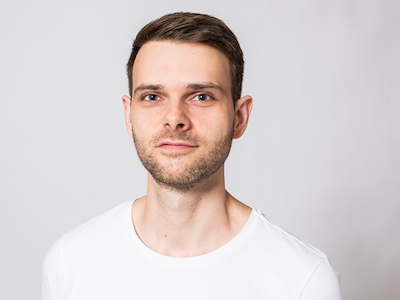About
Patricio Farrell is a mathematician working at the interface of applied analysis, modeling and scientific computing. He leads the research group Methods for Innovative Semiconductor Devices at WIAS Berlin, where his research bridges theory and applications. His focus lies on structure-preserving numerical methods for drift-diffusion systems and nonlinear PDEs, with applications in next-generation semiconductors, perovskite photovoltaics and neuromorphic computing.
Patricio serves as Vice Chair of KOMSO, editor of Open Mathematics and scientific ambassador for Brain City Berlin. Together with his team, he develops ChargeTransport.jl, an open-source tool used in both academia and industry. He earned his habilitation from Freie Universität Berlin, was named one of Capital's Top 40 under 40 and contributes to public science communication as a trained journalist.
CV
- Research group leader in mathematics, WIAS Berlin
- Vice chair, Committee for Mathematical Modeling, Simulation and Optimization (KOMSO)
- Privatdozent & Habilitation, Freie Universität Berlin
- Visiting professor at various institutions, including SISSA, Inria Lille & the University of Florence
- Tenured staff member, WIAS Berlin
- Fixed-term professor, Hamburg University of Technology
- Research associate, WIAS Berlin
- PhD, University of Oxford
- Diplom, University of Hamburg and University of Bath
Funded projects
As PI, Patricio has secured approximately €1.5 million in third-party funding. This includes support from the Leibniz Association, MATH+ and Inria.
- Associate team together with Inria Lille: Analysis of Robust Numerical Solvers for Innovative Semiconductors in View of Energy Transition (ARISE)
- Research group Numerical methods for innovative semiconductor devices (€1,000,000)
- Associated partner within Excellence in Photonic Crystal Surface Emitting Lasers (PCSELence)
- PI within the MATH+ projects:
- PaA-1: Electronics of Nanostructured Perovskite Devices (€140,000)
- A2-10: Electro-Mechanical Coupling for Semiconductor Devices (€140,000)
- IN-11: Identifying and Efficiently Computing Band-Edge Energies for Charge Transport Simulations in Strained Materials (€70,000)
- IN-B3: Understanding doping variations in silicon crystals (€70,000)
Activities
- Vice Chair of KOMSO, building a new vision, mission and structure for applied mathematics community
- Editor of Open Mathematics (De Gruyter)
- Scientific ambassador for Brain City Berlin
- Mentor within Berlin Mathematical School and WIAS
- Member of SIAM, KOMSO, ECMI as well as the ECMI special interest group Modeling, Simulation and Optimization in Electrical Engineering
